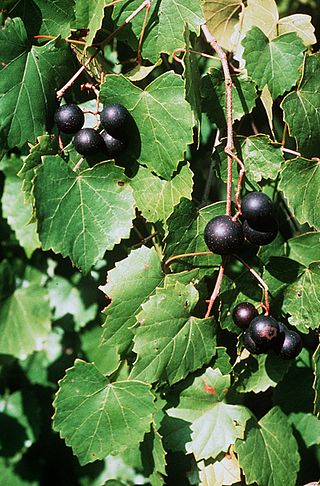
Grits are a type of porridge made from boiled cornmeal. Hominy grits are a type of grits made from hominy – corn that has been treated with an alkali in a process called nixtamalization, with the pericarp removed. Cooked in warm salted water or milk and considered a soup. Grits are often served with flavorings as a breakfast dish. Grits can be savory or sweet, with savory seasonings being more common. Grits are similar to other thick maize-based porridges from around the world, such as polenta and mieliepap. The dish originated in the Southern United States but is now available nationwide. Grits are often part of a dinner entrée shrimp and grits, served primarily in the South.

Soul food is an ethnic cuisine originating in the Southern United States. It originated from the cuisines of enslaved Africans trafficked to the North American colonies through the Atlantic slave trade during the Antebellum period and is closely associated with the cuisine of the American South. The expression "soul food" originated in the mid-1960s, when "soul" was a common word used to describe African-American culture. Soul food uses cooking techniques and ingredients from West African, Western European, and Indigenous cuisine of the Americas.

The cuisine of the Southern United States encompasses diverse food traditions of several subregions, including Tidewater, Appalachian, Lowcountry, Cajun, Creole, and Floribbean cuisine. In recent history, elements of Southern cuisine have spread to other parts of the United States, influencing other types of American cuisine.

Vitis rotundifolia, or muscadine, is a grapevine species native to the southeastern and south-central United States. The growth range extends from Florida to New Jersey coast, and west to eastern Texas and Oklahoma. It has been extensively cultivated since the 16th century. The plants are well-adapted to their native warm and humid climate; they need fewer chilling hours than better known varieties, and thrive in summer heat.

The scuppernong is a large variety of muscadine, a species of grape native to the Southern United States. It is usually a greenish or bronze color and is similar in appearance and texture to a white grape, but rounder and larger and first known as the 'big white grape'. The grape is commonly known as the "scuplin" in some areas of the Deep South. It is also known as the "scufalum", "scupanon", "scupadine", "scuppernine", "scupnun", or "scufadine" in some parts of the South. The scuppernong is the state fruit of North Carolina.
Romanian cuisine is a diverse blend of different dishes from several traditions with which it has come into contact, but it also maintains its own character. It has been mainly influenced by Turkish and a series of European cuisines in particular from the Balkans, or Hungarian cuisine as well as culinary elements stemming from the cuisines of Central Europe.

Pecan pie is a pie of pecan nuts mixed with a filling of eggs, butter, and sugar. Variations may include white or brown sugar, cane syrup, sugar syrup, molasses, maple syrup, or honey. It is commonly served at holiday meals in the United States and is considered a specialty of Southern U.S. origin. Most pecan pie recipes include salt and vanilla as flavorings. Pecan pie may be served with whipped cream, vanilla ice cream or hard sauce.

Iraqi cuisine is a Middle Eastern cuisine that has its origins in the ancient Near East culture of the fertile crescent. Tablets found in ancient ruins in Iraq show recipes prepared in the temples during religious festivals—the first cookbooks in the world. Ancient Mesopotamia was home to a sophisticated and highly advanced civilization, in all fields of knowledge, including the culinary arts.

Fried green tomatoes are a culinary dish usually found in the United States, made from unripe (green) tomatoes coated with cornmeal and fried.

North Carolina wine refers to wine made from grapes grown in the U.S. state of North Carolina. Wine has been produced in the area since the early days of European colonization in the 17th century. Wine growers in North Carolina were the first to cultivate a Native American grape variety, the Scuppernong, which produces a sweet wine, examples of which are still being made in the state. Most wine produced in North Carolina since the year 2000 is made from Vitis vinifera grape varieties, although French hybrid and Vitis labrusca varieties remain common.
Firefly Distillery is a company located near Park Circle North Charleston, South Carolina, that produces a line of alcoholic beverages and licenses its brand name to the Sazerac Company for Firefly branded products produced elsewhere. Some Firefly branded products sold outside of South Carolina are actually produced in Kentucky by Sazerac rather than being produced by Firefly itself.

The Maritimes consist of the provinces of New Brunswick, Nova Scotia and Prince Edward Island. Some of the cuisine has its origins in the foods of the indigenous peoples of the region.

Grape pie is a type of fruit pie made from Concord grape and is part of harvest time traditions in the Finger Lakes region of New York in the United States. It is particularly sought after at the Naples Grape Festival, and can be found at various shops around town.

Texan cuisine is the food associated with the Southern U.S. state of Texas, including its native Southwestern cuisine influenced Tex-Mex foods. Texas is a large state, and its cuisine has been influenced by a wide range of cultures, including Tejano/Mexican, Native American, Creole/Cajun, African-American, German, Czech, Southern and other European American groups.

Peanut pie, sometimes called the "poor man's pecan pie", is a pie that is part of the cuisine of the Southern United States, in the Tidewater region, where peanuts are a common crop. It can be served as a kosher dessert. In North Carolina it was a standard dish to serve at family reunions or church events.

Hash is a name for a stew or gravy made of pork, offal and onions. It is usually paired with rice as "hash and rice". Hash is part of the cuisine of the Southern United States where it was invented as a way to use unappetizing cuts of meat. The dish is primarily consumed within the state of South Carolina, where it is commonly paired with barbecue. Many variations of hash exist, which include different combinations of meats and vegetables.















